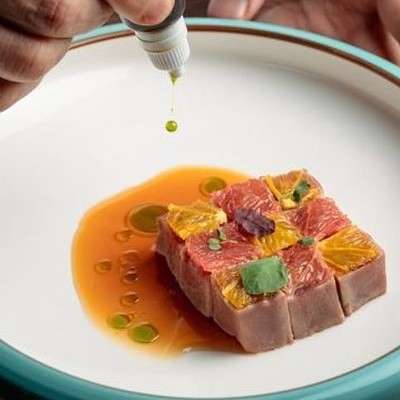I bake a lot of bread. As with most people who bake a lot of bread, I hardly look at recipes anymore. Bread is intimidating to a lot of people because of the precision involved. The funny thing is, the very exactness of bread makes it a very simple matter. The ratios don't change, and neither does the basic process.
Once you get comfortable with bread - the ingredients and processes involved; the feel and look of a loaf as it moves through various stages of proof, rise and oven spring - it becomes less and less mysterious, to the point that it becomes almost second nature. You know where to start, you can tell when you've gone astray, and you know how to get things back on track when you have issues. That's when you can start having fun with bread.
Aside from the basics of yeast, flour, water and salt, bread is an almost infinitely variable proposition. Start with a basic bread dough (try Michael Ruhlman's simple and fantastic 5:3 bread ratio, for example) and you can experiment as much or as little as you like. Care to work in a bit of whole wheat flour? Go right ahead (just keep it to a max of about 20 percent of the total flour by weight, or your bread will likely be too dense and have trouble rising). How about some additional grains? I've mixed everything from sunflower seeds to flax seed to couscous (talk about a moist crumb) into loaves.
Lately, I've been experimenting with seaweed. Kombu, a primary component in Japanese Dashi broth, is rich in naturally occurring glutamic acid, the amino acid responsible for the flavor known as umami. Foods high in glutamic acid have a savory, rich, mouth-filling taste. I've been adding kombu to sauces and stocks, allowing the sea vegetable to work its umami magic. It works wonderfully, contributing subtle flavor yet considerable depth to a wide variety of foods.
I decided that, if I can season other foods with kombu, and I season breads with all sorts of herbs, spices and other flavor carriers, certainly I could combine the two principles. I started out by toasting a few sheets of kombu in a dry pan. Once they were lightly browned and fragrant and had crisped up a bit, I threw them in a spice grinder and pulverized them. I ended up with about ¼ cup of greenish powder. Mixed in with the other dry ingredients (AP flour, WW flour, and rolled oats in this loaf), it represented about 5 percent of the total weight.
To complement the kombu, I subbed toasted sesame oil for half of the fat in the dough. Once kneaded, the dough was lightly flecked with green, but otherwise indistinguishable from a "normal" loaf. Once baked, though, the kombu showed through a bit more. In addition to umami, glutamates also serve to enhance the perception of other flavors. The bread was noticeably more robust, with subtle sweetness, nuttiness, and just a hint of smokiness showing through. It was nice, but I think it still needs a bit more tweaking. Next time, I'm going to add some dried shitakes to the kombu, and see how that goes.
Follow Eating Our Words on Facebook and on Twitter @EatingOurWords






